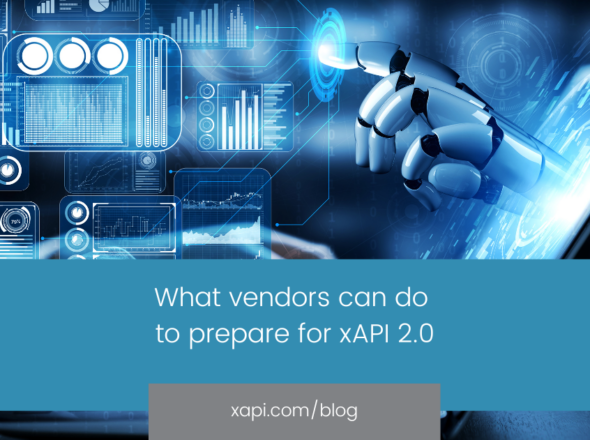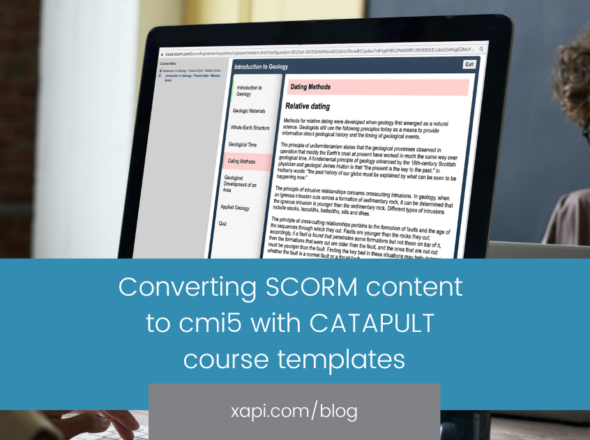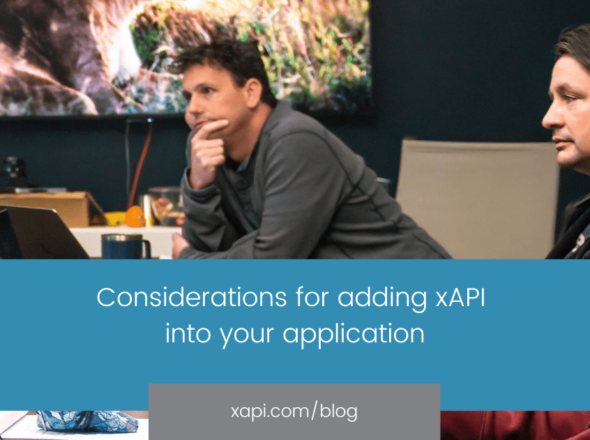If you’ve thought about adding xAPI or cmi5 support into your application, you’ve probably heard that you need an LRS, but what does that mean?
Overview of an LRS
Let’s start with the acronym LRS, which stands for Learning Record Store. It is a place to receive, store and provide access to durable learning records. That last part on providing access is the revolutionary piece that enables xAPI data to be portable and a key difference when comparing xAPI to other learning standards. Another important piece of an LRS is that it validates the format of xAPI statements to ensure they are conformant to the specification. Speaking of conformance, whether you’re building or buying an LRS, it’s important that it conforms to the strict parameters of ADL’s LRS Conformance Test Suite, which verifies that products meet the requirements. ADL also provides a list of conformant LRSs who have passed so you know that your efforts are compatible with the larger xAPI ecosystem.
Why use an LRS?
There are a variety of learning experiences that can be recorded and stored in an LRS. From new technologies, like simulations and games, to more traditional training through a course, video and webpage, you can capture anything you want. You can even use your existing content in SCORM or AICC and convert the data generated by that content into xAPI data with the help of Rustici’s products. This conversion allows you to achieve xAPI’s portability benefit with existing content.
Durability
Per the xAPI specification, there’s no way to delete or modify a learning record. Any false or inaccurate statements can only be voided. Durability is beneficial when it’s critical to have accurate records for an audit trail of conformance training. It prevents learning records from being editable as you could easily lose track of which version you have, and also provides a solid foundation for providing portability.
Portability
The learning records within an LRS are portable and can move them from system to system. There are a lot of scenarios where portability can happen. For example, an LRS can forward statements to a partner LRS or you can have a single LRS pulling a central data repository together within your own organization. When combined with the conversion of data tracked by other standards into xAPI, it becomes possible to send all your learning data wherever you need it.
Learning analytics
People care about the data in LRSs for different reasons. Consider the case where a training consultant is providing CPR training on an electronic mannequin. xAPI statements could be sent on how hard and frequent the compressions are being done on the device and if they passed the CPR training scenario. The people who are running the training program would be interested in seeing this data as well as the device manufacturer and, of course, the hospital where the trainee works for compliance. Overlaying xAPI data with real-world patient results can provide insightful correlations between who is successfully resuscitating and why.
Introduction of the LAP
After you begin collecting all this data in an LRS, you likely want to make sense of it using a Learning Analytics Platform also known as a LAP. The LAP includes an LRS as it’s where all the learning data is aggregated and normalized. An LAP can add layers in the forms of HRIS (Human Resources Information System) and job performance data to show the L&D impact across the business. The possibilities are endless as using an LAP enables you to slice and dice the database with various lenses into demographics, regions or types of training programs.
Uses cases
Every organization has a learning ecosystem, whether you’ve mapped it out with a flowchart or not. It consists of all your training programs that are delivered to your employees, customers or partners.
Centralized in-house training
If you have a collection of siloed systems, you’re likely doing a lot of cumbersome, manual processes in pivot tables to bring that data together across disparate locations. The first thing is to start with data aggregation and visualize all the inputs and outputs across your learning ecosystem.
Extended enterprise analytics
If you are sending training to customer and partner LMSs, you may face a lack of visibility on what’s working outside of your organization. By having a single source of truth across all these learner groups, you can identify gaps and develop targeted approaches to help close those learning gaps.
Connecting business outcomes
This is the ideal outcome for every organization—to have a clear understanding of the impact training programs and initiatives have on the business. The L&D department then helps drive the strategy rather than being reactionary. Learning becomes more agile as it becomes an iterative process with continuous feedback on what has the most impact.
Getting started
If you’re new to LRSs, a great place to start is by signing up for a free trial account with SCORM Cloud’s LRS. With its simple UI, you can easily set up LRS endpoints, see the xAPI statement being received and also forward statements to other platforms. If you’re further along in your LRS journey and are looking for an LAP, sign up for a free Watershed Essentials LRS account to see high-level reporting with your data.
If you want to know more about the magic of LRSs, LAPs and xAPI, be sure to watch my recorded session with Brandon Brodkin from Watershed where we discuss this topic in greater detail. And feel free to reach out and ask us your LRS questions.


